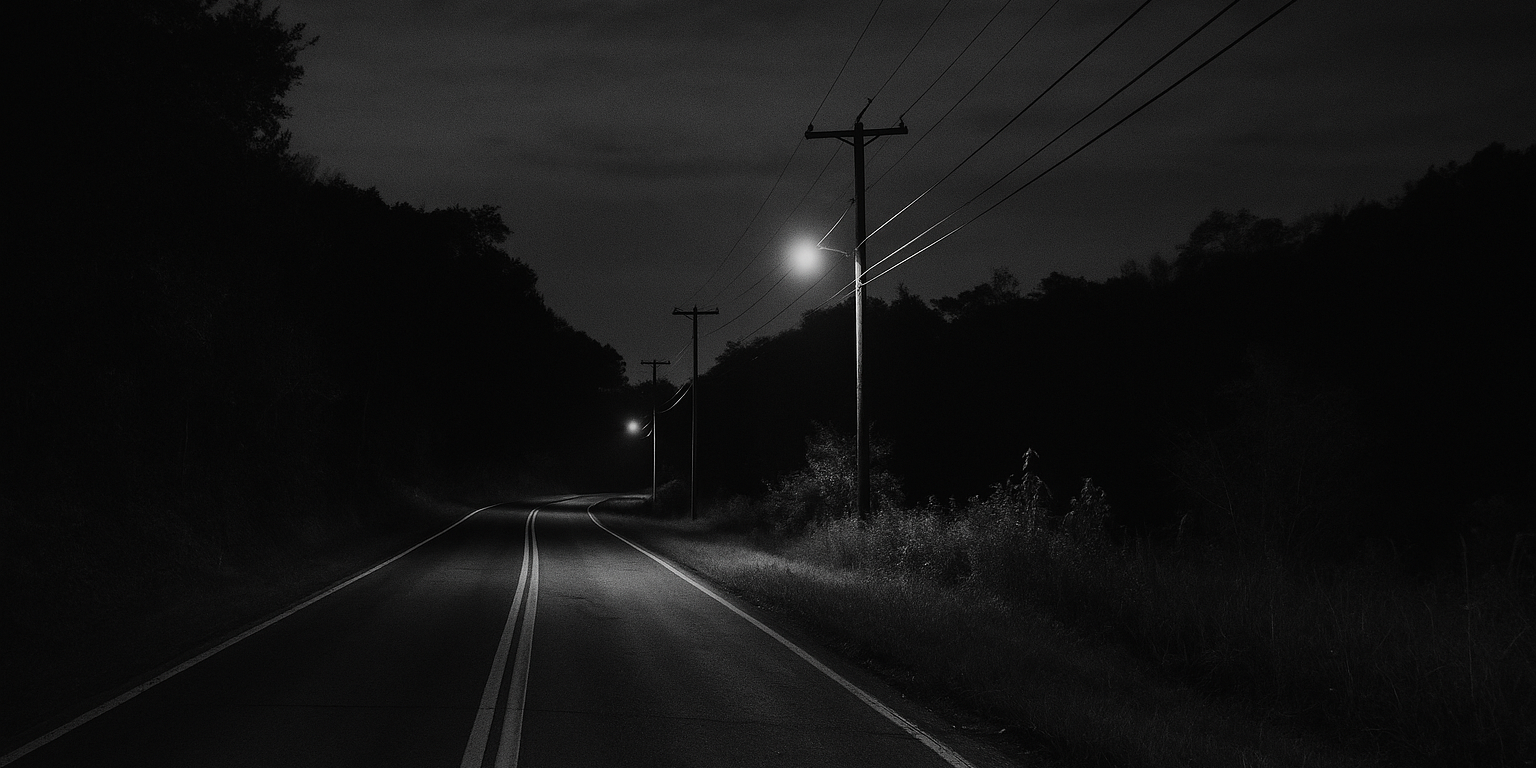Koppel, Pennsylvania, and the surrounding Beaver County countryside. By day this quiet borough looks unassuming, but local folklore spins tales of a faceless “Green Man” wandering its roads at night . The story of Pittsburgh’s “Green Man” or Charlie No-Face is woven into Western PA legend – a ghostly figure in an abandoned tunnel, glowing green and pursuing terrified motorists. Some versions even say that flashing headlights or honking three times will summon him . In reality, the Green Man was not a ghost at all but a real person: Raymond “Charlie No-Face” Robinson. His true life – marked by a childhood accident and decades of kindness – was far less spooky than the myths that sprang up around his name.
The Legend of the Green Man
Long before smartphones and social media, roadside legends spread by word of mouth. In Koppel and other towns north of Pittsburgh, drivers would dare each other to find “Charlie No-Face” on late-night outings. One popular story holds that curious teens drove into the old Piney Fork Tunnel (south of Pittsburgh) at night, turned off their lights, and called out “Green Man!” – only to see a figure with skin “tinged green” emerge from the darkness . In some tellings the Green Man’s touch would stall your car, his glowing body somehow draining your battery . Another variation says simply that if you drive on Route 351 through Koppel after midnight, you might see his “glowing green skin” in your headlights . Even the number three has a role: legend claims honking three times near the tunnel will make him appear .
These versions have all the trappings of a ghost story – eerie tunnels, strange lights, and creepy rules of engagement – but none of it matches the real Raymond Robinson. In fact, as one local writer notes, “Charlie No Face or the Green Man is actually a person… not just a myth or a legend to scare little kids” . The colorful ghost stories grew from kernels of truth but became far wilder over time. (Another version even said Ray was a factory worker who fell into acid or was struck by lightning, turning him green – clearly the stuff of superstition.) The key point is this: myth says a supernatural creature haunted the roads; reality is that a human being named Ray Robinson walked them every night, and he was very much alive, not a spectral monster.
The Real Raymond “Charlie No-Face” Robinson
Raymond Theodore Robinson was born in 1910 and grew up in Beaver Falls, near Koppel . In June 1919, when he was about eight years old, Ray and some friends went to the trolley trestle at Morado Park (the Wallace Run Bridge) on a dare to retrieve a bird’s eggs. Tragically, Ray grabbed onto a 22,000-volt live wire on the bridge . The massive electrical shock “horribly electrocuted” him – doctors expected the boy to die . Miraculously, Ray survived, but the current burned off much of his face and right arm . He lost both eyes, his nose, and nearly his arm in the accident . His upper body was left permanently and severely scarred.
Ray spent months in the hospital and years recovering at home. He was mostly blind and had to adapt to life without his eyes. In photos from that time, he wears dark glasses and a prosthetic nose – a practical choice to hide his injuries and protect himself from bright light . As an adult, he made doormats, wallets, and belts to help support himself . Most of the time he stayed indoors by day, understandably shy about how he looked. But Ray loved the outdoors and the fresh air. When night fell, he would head out alone. Using a walking stick, he gingerly felt his way along the rural roads. He kept one foot on pavement and the other on gravel so he always knew where he was . Route 351, which runs through Koppel and Big Beaver, became his favorite haunt after sundown. It was quiet and sparsely populated – perfect for a solitary walk.
Nighttime Encounters in Beaver County
For decades after the accident, Ray Robinson was a familiar if unusual sight to night owls in Beaver County. Teenagers in the 1950s and 60s began to hear about “Charlie No-Face” and started looking for him while cruising the backroads . Some would even stop and chat. Ray was surprisingly friendly: he enjoyed company, answering questions about baseball or the world. Local historian Thomas White recalls, “Most people actually… found that he was a great guy. He knew all the baseball statistics… People would bring him beer and cigarettes.” Indeed, Ray would accept an unopened beer can or a pack of cigarettes and in return tell stories or joke with his visitors.
Ray’s appreciation of a kind gesture was genuine. He liked to smoke and drink, and these late-night encounters gave him one of his few chances to socialize. Friends of Ray said he “loved to smoke, he loved to drink beer,” and looked forward to meeting people on his walks . In fact, some reports describe exactly the scenes etched in local lore: young drivers offering Ray a beer in exchange for a photograph, or asking trivia questions about baseball and listening to his answers .
However, not every encounter was pleasant. A small number of thrill-seekers turned cruel. There are sad accounts of kids beating Ray, or even spiking his drink with urine, to scare him . He once survived being knocked over by a passing car, and after a particularly nasty assault he reportedly carried a pistol for protection . Understandably, Ray became skittish around vehicles and would stand alert when cars approached at night .
By the 1970s, Ray was older and walked less often. Many of the teenagers who had known him moved away. What remained were the stories – now embellished and sensationalized – rather than the man himself. As one reporter puts it, “the truth about Robinson became skewed and the urban legend of Charlie No Face or Green Man persisted and took on a life of their own” . In other words, fact gave way to folklore.
Separating Fact from Folklore
To untangle the legend from reality, it helps to list a few of the popular myths and the actual facts:
- Myth – Tunnel Ghost: The Green Man is said to appear in the abandoned Piney Fork Tunnel in South Park Township, summoned by flashing headlights or honking three times . Fact: Ray Robinson never lived in or emerged from any tunnel. He simply walked along Route 351 and other roads near Koppel at night . The “tunnel” stories grew later among thrill-seekers, but there’s no evidence he ever inhabited one.
- Myth – Glowing Green Skin: One legend claims Ray’s skin was permanently a eerie green color after his accident (some even said he died in acid or lightning) . According to this tale, his touch could stall cars with electric charge. Fact: Ray’s skin was badly scarred but not actually green or radioactive. He did not emit light. The stories of his glowing or “electrified” touch are embellishments. In fact, Ray usually wore plain clothes (often green-colored by coincidence ) and standard dark goggles to shield his eyes, not a costume of green glow. His presence in headlights may have appeared ghostly to some, but it was just a man with burned skin.
- Myth – Invulnerability and Death: Some say the Green Man is immortal or that he died in the 1920s, wandering as a ghost ever since. Others claim his corpse is buried near the tunnel or on Route 351. Fact: Ray Robinson clearly lived a normal lifespan. He died in 1985 at the age of 74 . He never reappeared after that because, unlike the legend, he was not a specter – he was an actual person with an end to his life. After his death he was buried in Beaver County, not left haunting the roads.
In short, the man behind the myth was a living person, not a monster. Legends often grow from small truths and grow larger with each retelling. In this case, the truth is that Ray Robinson walked the dark roads, while the myths say he haunts them. One set of stories paints him as a scary, supernatural figure; the reality is that he was a shy, friendly man who endured great suffering.
A Legacy of Kindness
Raymond “Charlie No-Face” Robinson passed away peacefully in 1985 at a Beaver County nursing facility . He had spent the later years of his life among family and close friends, far from the pranks and cars of his youth. In interviews, his relatives emphasize that the sensational ghost stories never capture who Ray really was. He was remembered as warm and gentle. His great-niece, Paulin LaCount, said, “I think his legacy really should be that he was kind to everybody… you can be kind to everybody, regardless of how they look.” Indeed, friends insist that Ray never held a grudge or a mean thought – the love he showed to others despite everything he had been through is what truly marked his life.
It’s fitting that after all these years, telling Ray’s real story can redeem his memory from the tall tales. Charlie No-Face the legend meets a kind old man named Ray Robinson – one who loved baseball, appreciated a cold beer, and chatted whenever visitors stopped by on a dark country road . In separating myth from man, we honor the real person: a man who survived a terrible accident and chose compassion over bitterness. The real Charlie No-Face showed a quiet courage and generosity that the ghost stories never mention. In remembering Raymond Robinson, we remember a neighbor and a human being, not a phantom – and that is the truth beneath the legend.









